What can the packaging industry do to facilitate the transition to paper? Packaging Europe recently attended an event hosted by delfort which provided a broad range of perspectives on this question from across the value chain.
There is one thing on which all of those who work within the packaging value chain today – in whatever capacity – can probably agree: we need to deal with the plastic waste problem, and in many cases the most desirable option could be to replace plastic packaging with fibre-based alternatives.
So far, so simple. But of course, it isn’t that simple, because it’s less clear how we get there. And by ‘there’, we mean developing paper barrier technologies to such an extent that they are able to substitute for plastics for even the most demanding food applications.
The need to collaborate on finding solutions is one reason why events such as specialty paper producer delfort’s ‘Refreshingly Different’, which was held on 8th May in Dü sseldorf during interpack week, are so vital. Here, the focus was on bringing together key figures from across the value chain to discuss the biggest challenges facing paper packaging producers, what those solutions might look like and how they can be implemented.
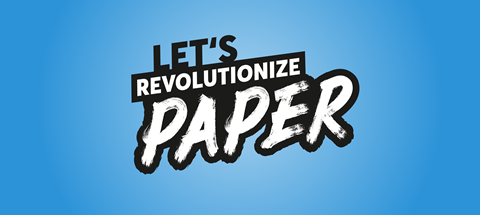
Key learnings
It’s rare, of course, to have so many different voices together in one room discussing systems change and there were naturally some valuable insights to take away. delfort CSO Christoph Steger and Herwig Kirchberger, Managing Director of Delsci, delfort’s sister company and its R&D arm, began by highlighting the main paper packaging design principles and how these must marry up with market requirements in order to ensure a pack is not just ‘recyclable’ in theory, but recycled in practice. Key among these are, on the design side, the development of more sophisticated barrier technologies, sealing and printing technologies; and on the market requirements side, the need to meet shelf life constraints, ensure recyclability, as well as understanding the separate priorities of brand owners, consumers and retailers.
More specifically, they discussed how delfort and Delsci are putting these principles into action through the four-stage ‘barrier cluster’ concept. Essentially, this comes down to a recognition that it makes more economic and commercial sense to pick the ‘low-hanging fruit’ when it comes to market entry with barrier papers and then scale up from there.
“Functional papers for the first cluster only require a minimum barrier but heat seal capability and can be used to pack many non-food items like toys, clothes and other FMCGs,” says Herwig Kirchberger. “Here we mainly seek to replace PE films.
Barrier Papers for Cluster 2 and 3 are designed with additional coating layers that provide a decent barrier against water vapour (MVTR), oil & grease (OGR) and oxygen/aroma (OTR). Depending on the customer requirements we are already achieving values close to PE and OPP in MVTR and substantially better values in OTR while at the same time providing heat seal functionality or capability for the application of state-of-the-art cold seal adhesives. These recyclable barrier papers target food applications such as chocolate, bread and bakery, dry and frozen food as well as moisture critical hygiene articles in the non-food section.
Step by step, all those developments and learnings in Cluster 3 bring us closer to fibre-based Cluster 4 products that will allow us to replace multilayer and metallized film materials that are currently utilized to pack coffee, cheese and other critical food products. It’s a logical, incremental approach and one that would appear to be paying off soon.
We were also privy to some valuable market insights from Patrick Poitevin, Senior Associate of Vision Hunters Ltd – which, for those who are unfamiliar, offers strategic advisory services for forest and bio-based industry. He talked us through the most important areas driving innovation in flexibles, which are: packaging performance, printing technologies, grammage development, packaging size, barrier properties, sustainability & recycling, and regulation.
And last but not least, the event was rounded off with an illuminating panel discussion around exactly how paper can replace plastics for more challenging applications – not just in terms of whether it is ‘technically possible’ but also the wider barriers to uptake. To this end, we heard from voices across the value chain, including the above-mentioned Patrick Poitevin; Jürgen Dornheim, P&G Director Corporate Packaging Innovation & Sustainability; Sabrina Stiegler, Lead Manager Sustainable Packaging of coffee and retail brand Tchibo; Nico Erhart, MD Die Labelisten packaging printers; Norman Thom, CEO of Clarus Films; and Julian Thielen of the Interseroh+ Alliance for packaging optimization. All agreed on the vital importance of greater collaboration along the value chain to achieve the required levels of barrier functionality – as well as the need to educate brand owners and packaging producers on the key benefits of paper to affect a ‘mindset change’ across the industry.

Big questions for the industry
But this was an evening on which we had the opportunity to gather many different perspectives, and in the remainder of the piece we’d like to reflect these. What follows are responses to a variety of different questions we put to attendees around the joint goal of expanding the capabilities of paper-based packaging. And of course, in the interests of balance, we were also mindful to explore where the barriers to growth lie and where the industry may have missed opportunities along the way.
1. What are the major sustainability challenges for the paper industry?
Paper is generally perceived by consumers as the most sustainable choice. But is this always the case, and if not what work needs to be done to further mitigate the environmental impact of using paper packaging? For example, what do we say to those who point out that paper requires significantly more water and energy to produce than plastic?
Eckhard Kallies, Business & Strategy Development Executive, delfort: “Of course there is always the argument about water and energy consumption when it comes to paper. As an industry we are heavily investing to do better here, and for this to happen we need to be better at communicating the benefits of paper to counter these arguments.
Since 2007, when delfort made a clear commitment to make sustainability one of the key focuses of our corporate activity, a lot has changed. Since then, we have managed to reduce our carbon emissions significantly; we now need less water than ever before for our production processes and the electricity that we use primarily comes from renewable sources.”
“As an industry we are heavily investing to do better, and for this to happen we need to be better at communicating the benefits of paper to counter these arguments.”
Arthur Erdem, Head of Sustainability ENGELHARDT GROUP: “It is clear that not every paper mill is equally sustainable. And not all pulp is equally sustainable so a proper LCA must be carried out. Corporate sustainability alone is not meaningful. There needs to be an overall calculation of the environmental impact along the supply chain.
“I criticize the exclusive focus on carbon footprint. There are 15 other criteria and especially the handling of water, which we rarely see mentioned in the wider media. And with paper packaging we are talking about the carbon footprint of a semi-finished product that later interacts with inks and printing techniques. A paper with a higher CF can have a lower one later after the process and a paper with a lower one after the process can have a higher one, depending on what happens to it throughout the production phase.”
According to several of those we spoke to, it’s also reasonable to say that there have been some missed opportunities along the way.
Jürgen Dornheim, P&G Director Corporate Packaging Innovation & Sustainability: “The paper industry has not always been as innovative as it could be. Sometimes the feeling seems to have been that ‘paper has been around for centuries and it has always worked so why should we change?’ What is needed is a change of habits and mindset, whether that’s from brand owners like us or the wider industry. A good example of how the industry can seize opportunity: a decade ago it was apparent that around a third of paper-making capacity had become idle, driven in part by reduction of the graphic industry thanks to the transition to digital publishing. The industry needed to rethink what to do with these expensive idle machines. Could we modify them – turn a graphic paper machine into a packaging paper machine? This is how organizations such as 4Evergreen came about.”
Arthur Erdem: “Years ago, the paper industry should have pushed ahead with research and development on its own initiative, without pressure from the public, without directives, and not just made incremental developments around Capex. Visions are needed, not just strategies on the green office table.”
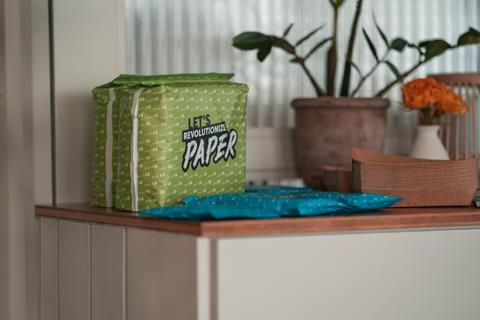
2.Can more brands be encouraged to make the switch?
We’ve seen increasing examples of brand owners both big and small introducing paper-based packaging for certain product lines (confectionery, for example). But does this represent a permanent switch or is it, in some cases, just a nod to consumer demand for plastic reduction? What are the considerations that might discourage brands from increasing their use of paper on a permanent basis?
Jürgen Dornheim: “Again, the biggest issue is mindset changes. Leaving plastic and moving to paper means leaving a decades-established industry and moving into technologies that are very different, so it can take time for them to accept.
“It is a different material class, not only with different properties, but requires different processes, investment for new or modified equipment, changing suppliers, adaptation of test procedures, rethinking established approval steps, and more.”
With any business, of course, cost is also going to be a factor behind decision-making no matter how committed they are to their sustainability agendas – a point that several of the people we spoke to also made.
Peter Hackl, Director SBA Packaging, delfort: “Of course when a brand only uses flexible film for its packaging over decades it is not easy to switch to paper so the whole value chain has to collaborate. Small changes may be necessary, such as changing the forming shoulders in machines, but we also see that our specialty papers are running excellently on existing machines with no or just minor machine changes making it easy to make the switch to fibre-based packaging.”
Peter Desilets, Founder and General Manager of Pacoon packaging design agency: “When we develop concepts usually companies say the fibre solution would be more expensive because it is more sustainable. They are often quite surprised when we tell them we can in fact save them about 10% in costs with paper and money convinces on the long term perspective.”
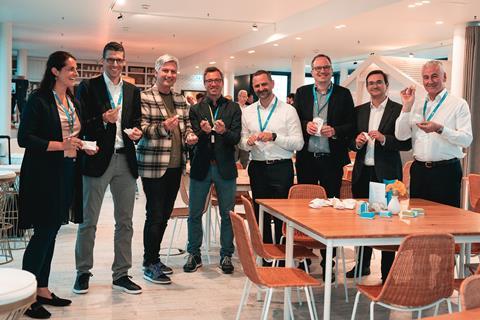
3.How can we turn ‘designed for recyclability’ into ‘actively recycled’?
Paper is of course a renewable, recyclable material. Even so, according to Cepi, the European paper recycling rate was still at 71.4% in 2021, so there is clearly room for progress here. Part of the problem is that there can be a big gap between designing a material or package for recyclability, and linking up the infrastructure and consumer behaviour so that it is recycled in reality (marrying up design principles with marketing requirements, as we discussed above). How can this be addressed – and can we ever say that a material is ‘100% recyclable’?
Julian Thielen, Interseroh+ Alliance for packaging optimization: “I work for a sorting and recycling company which relies on the quality of the input stream. Quite simply, if packaging is not designed in a way that is sortable and recyclable then all the work is useless. But we need to find the right solution for each product. There is no one solution that fits all.”
“Quite simply, if packaging is not designed in a way that is sortable and recyclable then all the work is useless. ”
Herwig Kirchberger, Managing Director, Delsci: “First, many players in the market measure recyclability using different scales, so it depends upon the method you use. The second is that recyclable and recycled are very different. Our goal is to develop non-composite paper packaging that eliminates the need for material separation, increasing the likelihood that the packaging will be recycled. However, it also needs the public expansion of collection and recycling systems and the contribution of every consumer to make a product 100% recycled.
“At Delsci we have a very holistic approach so we can’t move from plastic to paper looking only at barrier properties. We need to look at sealing, printing, machinability, etc. This is what we call the ‘design thinking’ approach, right up to the end of life.”
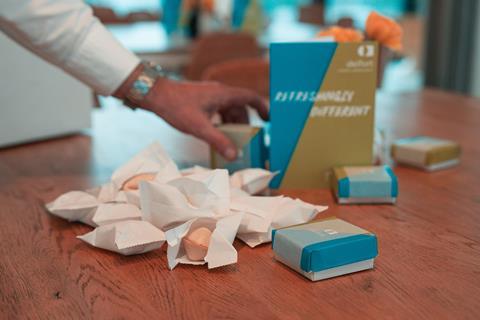
4.How can the industry collaborate to meet the challenge of machinability?
One of the main issues facing packaging manufacturers and brands on the journey from plastics to paper is the fact that many existing packaging machines simply aren’t designed for paper – and the cost to a company of entirely replacing their lines in many cases could be unworkable. This is a good example of how collaboration between different members of the value chain has proven to be key.
Roy Holfert, Sales Director, FormerFab: “At FormerFab we create forming shoulders for the production of paper bags. We teach machine manufacturers to handle paper on their machines to create high-performance paper bags. Often it requires only simple changes to make it possible, so a lot of the time it’s simply about the knowledge being there: if we don’t explain it to them they won’t believe it is possible at all to create functional paper bags. And no, it’s not always cheap for brands to change to paper but I think it may become a necessity as so many consumers are now demanding it.”
And what about the perspective from a machinery producer? Will bilateral collaboration be more important in future for their business?
Torsten Sauer, Sustainability Director, Syntegon: “Yes, we feel it’s our role to collaborate. It is important to make our machines fit to process our customers’ materials and to create more than one solution. This can only be done in coordination with the material supplier and machinery manufacturers like us.”
5.How far can paper really replace plastics?
It’s true, as we’ve seen, that there have been significant advances in barrier papers and their range of applications. But there are always going to be certain types of items – in the pharmaceutical sector, for example – that will require plastic packaging. Given this, we were interested to know where those in attendance at the event felt the limits to paper might lie, where the key pain points are and how far the industry has progressed.
Michaela Schreibmeier, Business Development Manager, delfort: “It’s true that by its nature paper is not that flexible, transparent or strong compared to plastic. These are the areas we are improving and working on. Both materials have their benefits, it always depends on the purpose for which it is used. Over the last few years, we have made our papers even lighter, more transparent and more resistant, and we are constantly improving here as well. This makes them ideal for some areas, such as toys, dry-food and e-commerce packaging”.
Peter Hackl, Director SBA Packaging, delfort: “It’s possible for paper to replace a lot of plastics now but it’s not desirable to replace it entirely. There are certain applications where paper packaging won’t fit – for example wet, fatty items like pet food. At the moment if you want a recyclable solution for these you will still need to go in the direction of mono-plastics.”
Arthur Erdem: “Replacing plastics with paper is really only possible up to a certain point and will reach system limits that are not too easy to overcome. The discussion is fuelled by climate change, ocean pollution, etc. What I miss here is the real, holistic systemic component when it comes to paper.”
Norman Thom,CEO, Clarus Films: “There are still limits, unfortunately. One of these is regulatory – there is no penalty or alternative approach against plastic films and no support for those who use paper. And then paper is more dense than plastic so it’s more costly per grammage – sometimes almost twice as much. Many B2B customers are still wary of this, although that could change as the pressure from consumers for more sustainable solutions grows.”
Despite these limits, we could argue that paper has certain advantages over plastics when it comes to end-of-life scenarios – but we must also keep in mind the risk that in striving for ever-greater applications for paper we risk over-engineering and therefore, potentially, negating these benefits.
Jürgen Dornheim: “With packaging, when it comes to circularity we have to consider not only whether the material we use is recyclable but how does it behave when it is littered – in other words, consider the worst-case scenario. Paper certainly has advantages here as it degrades in nature. But we have to take care we don’t modify paper in such a way that it stays rigid over decades and will not break down. So the question is, how can we modify paper to fulfil its requirements in terms of product protection but at the end of the day if it goes into nature it degrades? That’s a balance we always need to get right.”
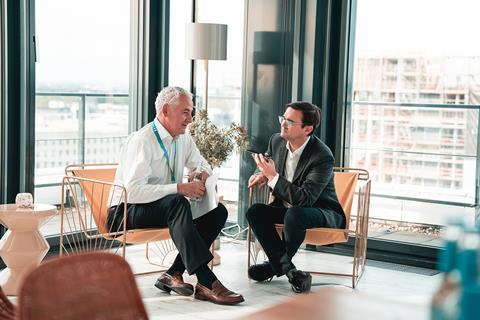
6.What is the ‘next step’ for barrier papers in terms of functionality?
So far we’ve looked at the current market situation, but what is going to drive the industry moving forward and what advances do we see on the horizon for the coming years?
Johannes Zipfel, Managing Director, Delsci: “Delsci has developed some completely renewable coatings for fast food applications with a very high fat and grease barrier. These will be marketed in Q4 this year.”
Patrick Poitevin: “The key trends and drivers are barriers, and this includes water vapour, oxygen, grease resistance etc. So legislation related to the recyclability of barrier papers and food compliance will be issues in future. Residue should be reduced to the minimum and bio polymers will be key. But another key drive is lightweighting, as paper is heavier than plastic. The weight is important for the entire supply chain, from inbound to outbound.”
And what of the ‘Holy Grail’ for barrier paper: coffee?
Sabrina Stiegler, Lead Manager Sustainable Packaging, Tchibo: “The next step in barrier papers is to increase the barrier effect in order to meet the high requirements on packaging for demanding food products such as coffee. Next to the oxygen, grease, and UV barrier I consider the enhancement of water vapor barrier as a key improvement factor to ensure the protection of our products. At the same time, it is important to consider recyclability and avoid problems in the paper recycling process. At Tchibo, we are constantly looking for innovative packaging materials to make our packaging as sustainable as possible taking into account the entire value chain. We have already introduced a new recyclable film for some coffee packaging, saving up to 45% CO2e compared to previous materials. We continue to actively work towards this by researching and developing new approaches.
“Our R&D team is continuously researching sustainable, recyclable coffee packaging while ensuring to secure the high quality of the coffee. Our goal is to use environmentally friendly alternatives to traditional plastic/aluminium composite coffee packaging. Our ongoing development and efforts to become more sustainable and reduce material usage are at the core of our efforts.”
‘Progress is happening’
What we learned from our conversations is that progress is happening, even if in some areas it is not as fast as we might like. While with plastics the onus seems now to be on eliminating bottlenecks, getting the necessary regulations and infrastructure in place, with paper we are at the stage of building the required functionality and food compliance requirements, as it’s already an inherently recyclable material.
“When I speak to people about the transition to paper the prediction seems to be that 2025/26 might be the year when we see a much bigger switch from plastic to paper but we must continue to do our homework from a substrate perspective,” says Eckhard Kallies. “It will not always be simple and needs deep collaboration from all parties involved but I am very optimistic there are big changes coming.”
All that remains is for us to thank delfort once again for the opportunity to take part in this event and learn how those along the paper value chain are striving to meet their collective goals.






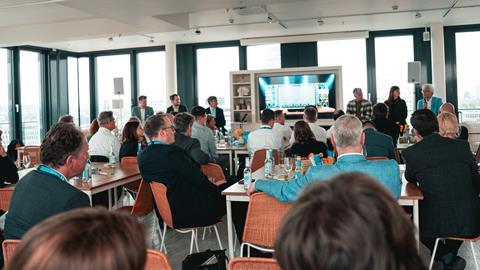













No comments yet